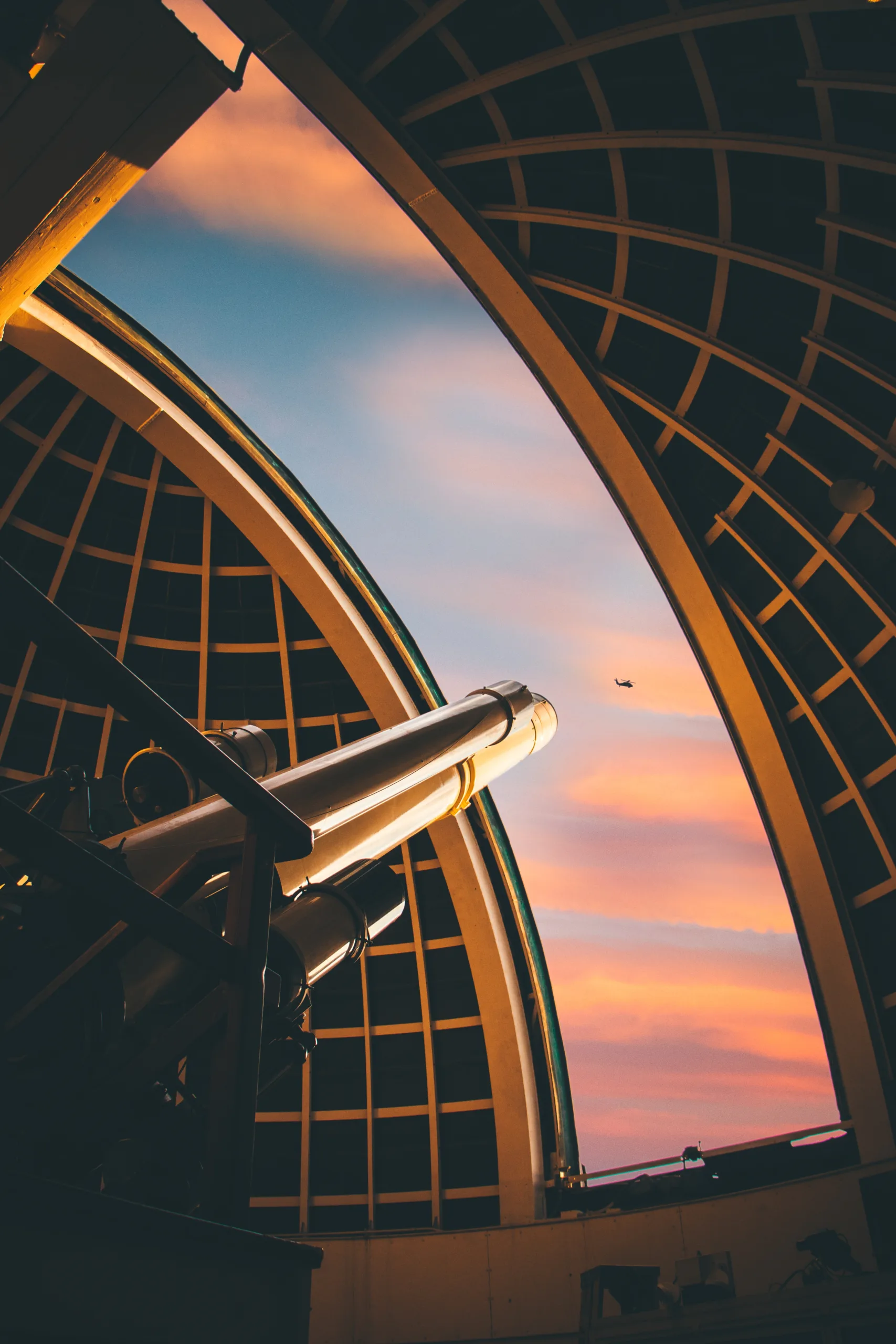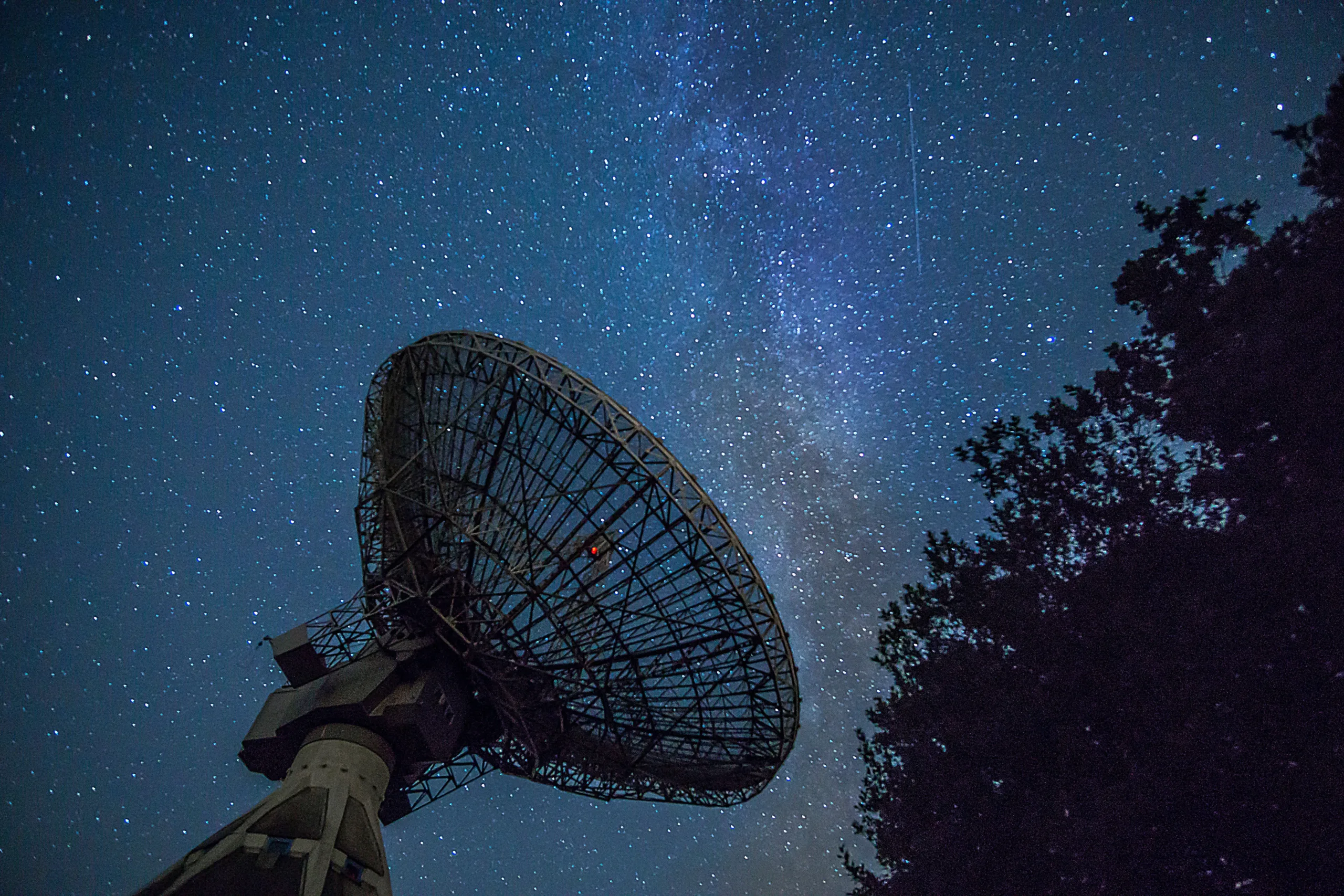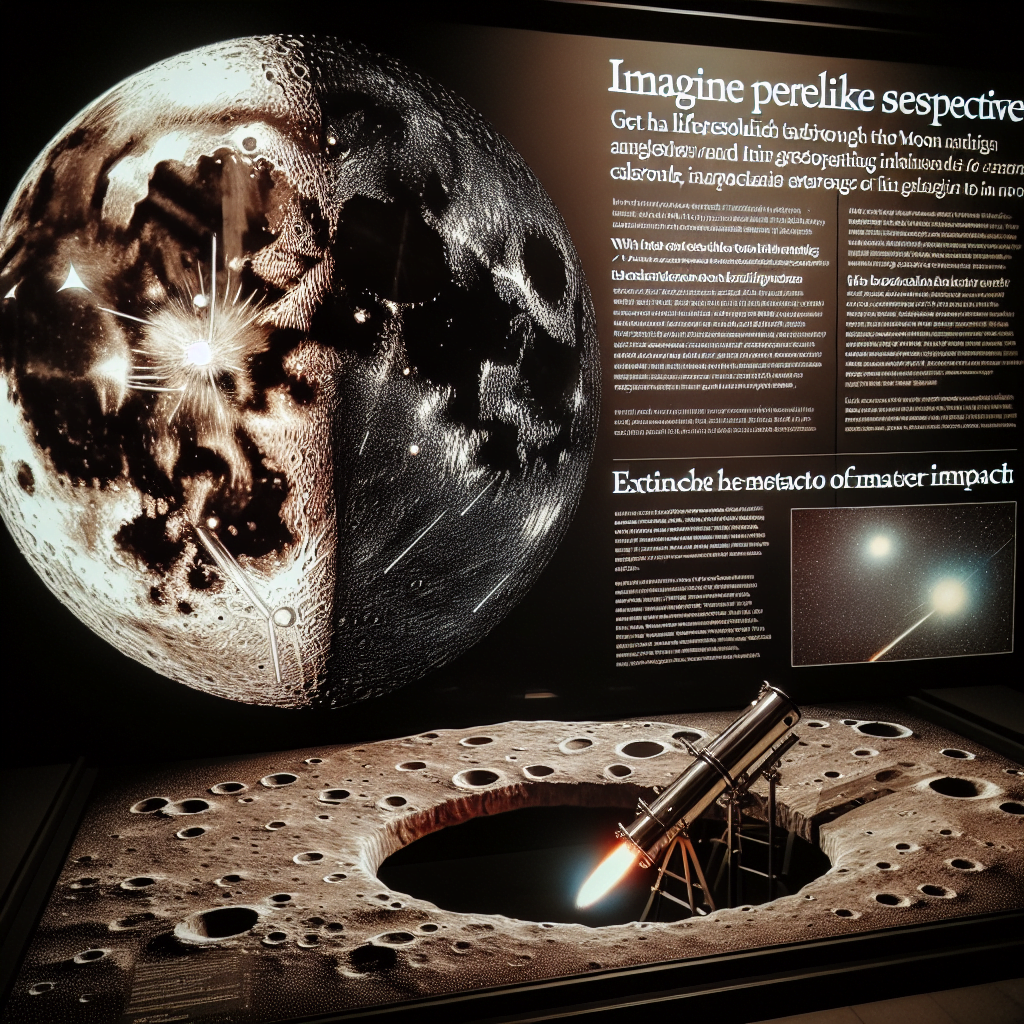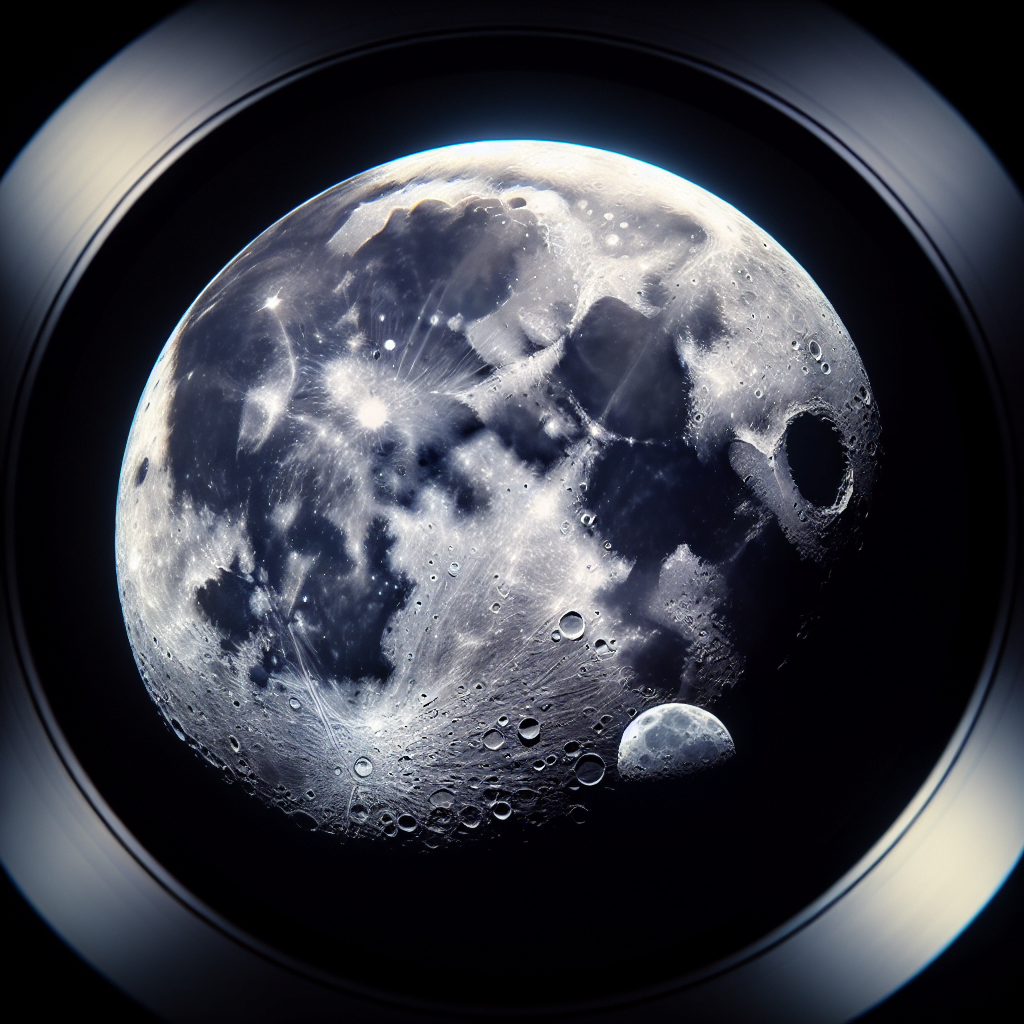Have you ever wondered if it’s possible to witness the spectacular phenomenon of meteor impacts on the moon with a simple telescope? Well, the answer is a resounding yes! Using a telescope, you can actually observe and marvel at the celestial fireworks that occur when a meteor collides with the moon’s surface. In this article, we will explore how telescopes can provide us with a front-row seat to these cosmic events, giving us a deeper understanding of the moon’s history and the violent forces at play in our solar system. So, grab your telescope and get ready for a thrilling journey through space!

Table of Contents
Background
About meteor impacts on the Moon
The Moon, the Earth’s only natural satellite, is constantly bombarded by meteoroids, which are small rocks or particles traveling through space. When these meteoroids collide with the lunar surface, they create impact craters. These craters serve as a record of cosmic impacts and provide valuable insights into our Solar System’s history.
Importance of studying meteor impacts
Studying meteor impacts on the Moon is of great scientific importance. By analyzing impact craters and their characteristics, scientists can gain a better understanding of the frequency and size distribution of meteoroids in our Solar System. This information helps in predicting potential threats to the Earth from larger meteoroids and developing strategies to mitigate their impact.
Understanding Telescopes
Types of telescopes
Telescopes come in various types, each with its own advantages and limitations. The two primary types most commonly used for observing the Moon are reflecting telescopes and refracting telescopes. Reflecting telescopes use mirrors to gather and focus light, while refracting telescopes use lenses.
Telescope specifications
When considering a telescope for observing meteor impacts on the Moon, it is important to consider its specifications. The two key specifications to look for are the aperture and the focal length. The aperture determines the telescope’s light-gathering ability, while the focal length dictates its magnification power.
Factors to Consider
Moon visibility
Observing meteor impacts on the Moon requires a clear view of the lunar surface. It is important to plan your observations during the phases of the Moon when it is most visible, such as during new moon or full moon. These phases provide optimal lighting conditions for observing impact craters.
Meteor frequency
The frequency of meteor impacts on the Moon plays a crucial role in determining the likelihood of observing one. While the Moon is constantly bombarded by meteoroids, the occurrence of visible impacts can vary. It is essential to have realistic expectations and understand that capturing a meteor impact requires patience and perseverance.
Meteor impact detection
Detecting meteor impacts on the Moon can be challenging due to their small size and the vastness of the lunar surface. Specialized software and techniques can help identify potential impact events by monitoring changes in brightness or characteristic patterns. These tools are valuable in increasing the chances of capturing and documenting meteor impacts.
Observing Techniques
Timing meteor impacts
Timing is key when observing meteor impacts on the Moon. By studying the lunar surface at the right time, you increase your chances of witnessing an impact event. It is recommended to observe during the darker and calmer hours of the night when the lunar surface is more visible and disturbances in the atmosphere are minimized.
Visible impact debris
When a meteor impacts the Moon, it creates a plume of debris that can be visible for a short period. By carefully observing the region surrounding the impact point, you may be able to detect this debris cloud. Capturing images or videos of the debris can provide valuable data for further analysis.
Using specialized telescopes
Certain telescopes are specifically designed for capturing the subtle changes on the lunar surface during meteor impact events. These telescopes often employ high-speed video cameras and sophisticated image-processing techniques to capture and analyze the impact phenomena. Utilizing these specialized telescopes can greatly enhance the accuracy and reliability of your observations.

Telescope Power and Limitations
Magnification power required
To observe meteor impacts on the Moon, a telescope with moderate to high magnification power is required. This allows for a closer look at the impact craters and their surrounding areas. However, it’s important to note that excessively high magnification may result in a loss of image quality and reduced field of view.
Atmospheric distortion
the Earth’s atmosphere can greatly affect the quality of the observations. Atmospheric turbulence can cause blurring and distortion, making it challenging to capture clear images of meteor impacts. It is advisable to observe in areas with low atmospheric turbulence or employ techniques such as image stacking to mitigate the effects of atmospheric distortion.
Light pollution
Light pollution from cities and other sources can hinder the visibility of meteor impacts on the Moon. To minimize the impact of light pollution, it is recommended to observe from locations away from urban areas and select nights when the sky is darker, such as during new moon phases.
Best Telescope Options
Reflecting telescopes
Reflecting telescopes, such as Newtonian and Cassegrain telescopes, are popular choices for lunar observations. These telescopes offer large apertures, providing excellent light-gathering capabilities. They also tend to be more affordable compared to refracting telescopes, making them accessible to a wider range of observers.
Catadioptric telescopes
Catadioptric telescopes, such as Schmidt-Cassegrain and Maksutov-Cassegrain telescopes, combine the advantages of both reflecting and refracting telescopes. They utilize both mirrors and lenses to achieve their compact designs while maintaining good image quality. Catadioptric telescopes are versatile and well-suited for observing meteor impacts on the Moon.
Choosing the right telescope
Choosing the right telescope for observing meteor impacts on the Moon depends on individual preferences and requirements. Factors such as budget, portability, and desired image quality should be considered. It is recommended to consult with experienced astronomers or visit a local observatory to gain insights and make an informed decision.

Preparing for Observations
Understanding Moon phases
To effectively observe meteor impacts on the Moon, it is crucial to understand the different phases of the Moon. The ideal time to observe impacts is during the new moon phase when the lunar surface is mostly in shadow. This provides a high contrast background against which meteor impacts can be more easily detected.
Selecting the observing area
Selecting the right observing area is essential for obtaining clear and detailed observations of meteor impacts. Choose a location away from bright lights and obstructions that may hinder your view. Also, consider factors such as local weather conditions and accessibility when selecting your observing area.
Equipment setup and calibration
Before beginning your observations, it is important to set up your telescope properly and ensure it is calibrated. Aligning the telescope’s mount and accurately focusing the optics are crucial steps for obtaining clear and sharp images. Regularly check and calibrate your equipment to maintain its optimum performance.
Analyzing the Results
Recording observations
Recording observations in a systematic and consistent manner is crucial for accurate analysis. Keep a logbook or digital record of each observation session, noting down important details such as the date, time, location, weather conditions, and any notable observations or events. This record will serve as a valuable reference for future analysis.
Comparing impact data
After collecting a substantial amount of data on meteor impacts, it is beneficial to compare and analyze the results. Look for patterns or trends in the impact locations, sizes, and frequencies. This analysis can help identify any significant changes over time and contribute to a better understanding of meteor impact dynamics.
Sharing findings with the scientific community
Sharing your findings and observations with the scientific community is an excellent way to contribute to the collective knowledge in this field. Publish your data in relevant journals or present them at scientific conferences or meetings. Collaborating with other astronomers and researchers can also lead to valuable insights and strengthen the overall understanding of meteor impacts on the Moon.

Collaborative Efforts
Joining astronomy groups
Joining local or online astronomy groups can provide opportunities to connect with fellow enthusiasts and professionals in the field. These groups often organize observing sessions, workshops, and discussions related to meteor impacts and lunar observations. Engaging in collaborative efforts can expand your knowledge base and allow for shared resources and experiences.
Sharing observations and resources
Sharing your observations and resources with other astronomers can foster a supportive and collaborative environment. Participate in online forums, social media groups, or citizen science projects dedicated to meteor impact observation. By sharing your data, images, and techniques, you contribute to the accessibility and advancement of knowledge in this field.
Conclusion
Potential contributions to understanding meteor impacts
Observing meteor impacts on the Moon with a telescope has the potential to contribute significantly to our understanding of these cosmic events. By recording and analyzing impact data, astronomers can determine the characteristics and frequency of meteor impacts, improving our knowledge of the Solar System and the potential impact hazards to our own planet.
Future advancements in Moon observation
As technology advances, so does our ability to observe and study meteor impacts on the Moon. High-resolution cameras, advanced image processing techniques, and increased accessibility to telescopes continue to enhance our capabilities in monitoring and analyzing impact events. With ongoing research and collaborative efforts, future advancements in Moon observation will undoubtedly lead to new insights and discoveries in this exciting field.

